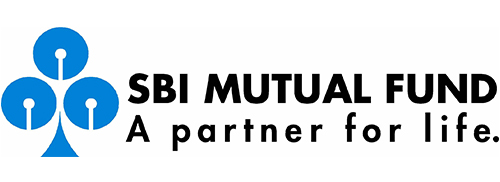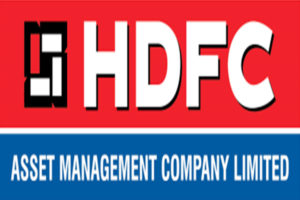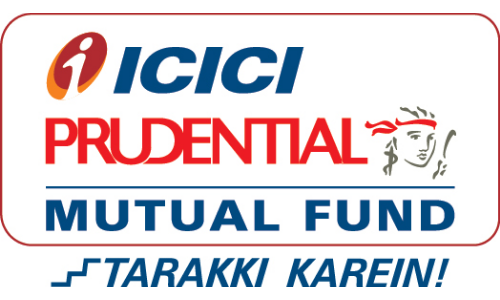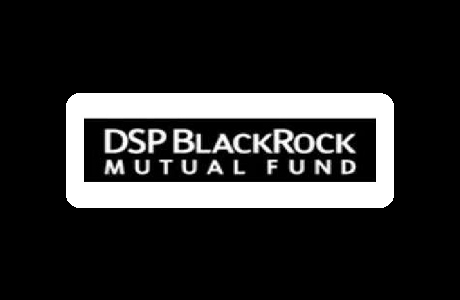
Table of Contents
6 Best Debt Mutual Funds for Lump sum Investments 2025
Debt Mutual Fund schemes in India have grown over the years. As a result, the best performing mutual debt funds in the Market keep on changing. There are various rating systems in place to judge a mutual fund scheme, namely CRISIL, Morning Star, ICRA. These systems evaluate a mutual fund in terms of returns, Standard Deviation, credit quality of securities, rate movement guidance by RBI, etc.
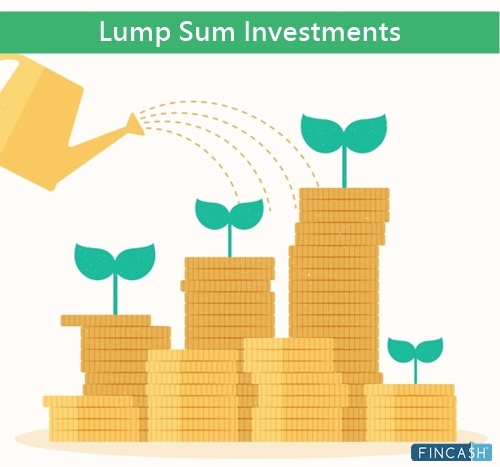
Why To Invest Lump Sum in Debt Mutual Funds?
- Better return than prevailing Fixed Deposit (FD) & Recurring deposit (RD) rates across banks
- Returns are linked to debt markets
- Immediate (T+1) Redemption online
- Indexation (Debt Taxation benefits) benefits on returns over three years
Talk to our investment specialist
Best Lumpsum Debt Mutual Funds FY 25 - 26
Below are the top ranked funds from Debt Categories primarily funds having AUM > 500 Crore & are in Ultra-short, Corporate bond, Credit Risk, Low Duration sub categories && Having maturity of less than 3 years and providing highest yields.
Top 6 Lump sum Debt Mutual Funds
Fund NAV Net Assets (Cr) Min Investment 3 MO (%) 6 MO (%) 1 YR (%) 3 YR (%) 2023 (%) Debt Yield (YTM) Mod. Duration Eff. Maturity Nippon India Credit Risk Fund Growth ₹34.4135
↑ 0.03 ₹989 500 2.8 4.7 9.2 7.5 8.3 9.01% 2Y 4D 2Y 4M 10D Kotak Credit Risk Fund Growth ₹28.8674
↑ 0.02 ₹728 5,000 2.3 3.7 7.4 5.5 7.1 8.77% 2Y 4M 10D 2Y 11M 19D SBI Credit Risk Fund Growth ₹44.9912
↑ 0.03 ₹2,255 5,000 2.8 4.5 9 7.6 8.1 8.73% 2Y 1M 20D 2Y 11M 23D ICICI Prudential Regular Savings Fund Growth ₹31.2148
↑ 0.01 ₹6,161 10,000 2.5 4.1 9.3 7.5 8.5 8.71% 1Y 11M 23D 2Y 8M 23D L&T Credit Risk Fund Growth ₹28.7326
↑ 0.02 ₹585 10,000 3.8 5.3 9.4 6.9 7.2 8.23% 2Y 2M 1D 2Y 10M 10D Kotak Low Duration Fund Growth ₹3,299.16
↑ 1.27 ₹11,755 5,000 2.3 3.9 7.7 6.6 7.3 7.86% 11M 5D 1Y 7M 28D Note: Returns up to 1 year are on absolute basis & more than 1 year are on CAGR basis. as on 17 Apr 25
(Erstwhile Reliance Regular Savings Fund - Debt Plan) The primary investment objective of this option is to generate optimal returns consistent with moderate level of risk. This income may be complemented by capital appreciation of the portfolio. Accordingly investments shall predominantly be made in Debt & Money Market Instruments. Nippon India Credit Risk Fund is a Debt - Credit Risk fund was launched on 8 Jun 05. It is a fund with Moderate risk and has given a Below is the key information for Nippon India Credit Risk Fund Returns up to 1 year are on (Erstwhile Kotak Income Opportunities Fund) The investment objective of the scheme is to generate income by investing in debt/ and money market securities across the yield curve and credit spectrum. The scheme will also seek to maintain reasonable liquidity within the fund. Kotak Credit Risk Fund is a Debt - Credit Risk fund was launched on 11 May 10. It is a fund with Moderately Low risk and has given a Below is the key information for Kotak Credit Risk Fund Returns up to 1 year are on (Erstwhile SBI Corporate Bond Fund) The investment objective will be to actively manage a portfolio of good
quality corporate debt as well as Money Market Instruments so as to provide
reasonable returns and liquidity to the Unit holders. However there is no
guarantee or assurance that the investment objective of the scheme will
be achieved. SBI Credit Risk Fund is a Debt - Credit Risk fund was launched on 19 Jul 04. It is a fund with Moderate risk and has given a Below is the key information for SBI Credit Risk Fund Returns up to 1 year are on The fund’s objective is to provide reasonable returns, by maintaining an optimum balance of safety, liquidity and yield, through investments in a basket of debt and money market instruments with a view to delivering consistent performance. However, there can be no assurance that the investment objective of the Scheme will be realized. ICICI Prudential Regular Savings Fund is a Debt - Credit Risk fund was launched on 3 Dec 10. It is a fund with Moderate risk and has given a Below is the key information for ICICI Prudential Regular Savings Fund Returns up to 1 year are on (Erstwhile L&T Income Opportunities Fund) The Scheme seeks to generate regular returns and capital appreciation by investing in debt (including securitised debt), government and money market securities. L&T Credit Risk Fund is a Debt - Credit Risk fund was launched on 8 Oct 09. It is a fund with Moderate risk and has given a Below is the key information for L&T Credit Risk Fund Returns up to 1 year are on The primary objective of the Scheme is to generate income through investment
primarily in low duration debt & money market securities. However, there is no
assurance that the objective of the scheme will be realized Kotak Low Duration Fund is a Debt - Low Duration fund was launched on 6 Mar 08. It is a fund with Moderate risk and has given a Below is the key information for Kotak Low Duration Fund Returns up to 1 year are on 1. Nippon India Credit Risk Fund
CAGR/Annualized return of 6.4% since its launch. Ranked 21 in Credit Risk category. Return for 2024 was 8.3% , 2023 was 7.9% and 2022 was 3.9% . Nippon India Credit Risk Fund
Growth Launch Date 8 Jun 05 NAV (17 Apr 25) ₹34.4135 ↑ 0.03 (0.08 %) Net Assets (Cr) ₹989 on 28 Feb 25 Category Debt - Credit Risk AMC Nippon Life Asset Management Ltd. Rating ☆☆ Risk Moderate Expense Ratio 1.63 Sharpe Ratio 3.82 Information Ratio 0 Alpha Ratio 0 Min Investment 500 Min SIP Investment 100 Exit Load 0-12 Months (1%),12 Months and above(NIL) Yield to Maturity 9.01% Effective Maturity 2 Years 4 Months 10 Days Modified Duration 2 Years 4 Days Growth of 10,000 investment over the years.
Date Value 31 Mar 20 ₹10,000 31 Mar 21 ₹10,766 31 Mar 22 ₹12,138 31 Mar 23 ₹12,711 31 Mar 24 ₹13,736 31 Mar 25 ₹14,913 Returns for Nippon India Credit Risk Fund
absolute basis & more than 1 year are on CAGR (Compound Annual Growth Rate) basis. as on 17 Apr 25 Duration Returns 1 Month 1.6% 3 Month 2.8% 6 Month 4.7% 1 Year 9.2% 3 Year 7.5% 5 Year 8.5% 10 Year 15 Year Since launch 6.4% Historical performance (Yearly) on absolute basis
Year Returns 2023 8.3% 2022 7.9% 2021 3.9% 2020 13.5% 2019 -5.9% 2018 1.9% 2017 6.1% 2016 7% 2015 10% 2014 8.8% Fund Manager information for Nippon India Credit Risk Fund
Name Since Tenure Kinjal Desai 25 May 18 6.86 Yr. Sushil Budhia 1 Feb 20 5.17 Yr. Data below for Nippon India Credit Risk Fund as on 28 Feb 25
Asset Allocation
Asset Class Value Cash 6.68% Debt 93.03% Other 0.28% Debt Sector Allocation
Sector Value Corporate 75.64% Government 17.39% Cash Equivalent 6.68% Credit Quality
Rating Value A 21.93% AA 48.81% AAA 29.26% Top Securities Holdings / Portfolio
Name Holding Value Quantity Summit Digitel Infrastructure Limited
Debentures | -6% ₹59 Cr 600 7.02% Govt Stock 2031
Sovereign Bonds | -5% ₹51 Cr 5,000,000
↑ 5,000,000 Renew Solar Energy (Jharkhand Five) Private Limited
Debentures | -5% ₹49 Cr 5,000 7.32% Govt Stock 2030
Sovereign Bonds | -5% ₹46 Cr 4,500,000 Century Textiles And Industries Limited
Debentures | -5% ₹45 Cr 4,500 Truhome Finance Ltd. 9.25%
Debentures | -4% ₹41 Cr 4,000 Prestige Projects Private Limited 11.75%
Debentures | -4% ₹40 Cr 4,000 Sandur Manganese And Iron Ores Limited (The) 11%
Debentures | -4% ₹39 Cr 4,000 Bamboo Hotel And Global Centre (Delhi) Private Limited
Debentures | -4% ₹38 Cr 3,800 Piramal Capital & Housing Finance Limited
Debentures | -4% ₹37 Cr 485,063 2. Kotak Credit Risk Fund
CAGR/Annualized return of 7.4% since its launch. Ranked 18 in Credit Risk category. Return for 2024 was 7.1% , 2023 was 6.4% and 2022 was 0.9% . Kotak Credit Risk Fund
Growth Launch Date 11 May 10 NAV (17 Apr 25) ₹28.8674 ↑ 0.02 (0.06 %) Net Assets (Cr) ₹728 on 28 Feb 25 Category Debt - Credit Risk AMC Kotak Mahindra Asset Management Co Ltd Rating ☆☆☆ Risk Moderately Low Expense Ratio 1.7 Sharpe Ratio -0.2 Information Ratio 0 Alpha Ratio 0 Min Investment 5,000 Min SIP Investment 1,000 Exit Load 0-1 Years (1%),1 Years and above(NIL) Yield to Maturity 8.77% Effective Maturity 2 Years 11 Months 19 Days Modified Duration 2 Years 4 Months 10 Days Growth of 10,000 investment over the years.
Date Value 31 Mar 20 ₹10,000 31 Mar 21 ₹10,617 31 Mar 22 ₹11,243 31 Mar 23 ₹11,328 31 Mar 24 ₹12,261 31 Mar 25 ₹13,049 Returns for Kotak Credit Risk Fund
absolute basis & more than 1 year are on CAGR (Compound Annual Growth Rate) basis. as on 17 Apr 25 Duration Returns 1 Month 1.3% 3 Month 2.3% 6 Month 3.7% 1 Year 7.4% 3 Year 5.5% 5 Year 5.9% 10 Year 15 Year Since launch 7.4% Historical performance (Yearly) on absolute basis
Year Returns 2023 7.1% 2022 6.4% 2021 0.9% 2020 5.3% 2019 6.6% 2018 9% 2017 6.2% 2016 6.6% 2015 10.4% 2014 9.1% Fund Manager information for Kotak Credit Risk Fund
Name Since Tenure Deepak Agrawal 11 May 10 14.9 Yr. Sunit garg 1 Nov 22 2.41 Yr. Data below for Kotak Credit Risk Fund as on 28 Feb 25
Asset Allocation
Asset Class Value Cash 1.71% Equity 2.25% Debt 92.25% Other 3.78% Debt Sector Allocation
Sector Value Corporate 72.88% Government 15.41% Securitized 3.96% Cash Equivalent 1.71% Credit Quality
Rating Value A 15.12% AA 60.33% AAA 24.55% Top Securities Holdings / Portfolio
Name Holding Value Quantity 7.18% Govt Stock 2033
Sovereign Bonds | -10% ₹71 Cr 6,865,000 Godrej Industries Limited
Debentures | -7% ₹50 Cr 5,000 Vedanta Limited
Debentures | -7% ₹50 Cr 5,000 Tata Projects Ltd.
Debentures | -7% ₹50 Cr 5,000 Bamboo Hotel And Global Centre (Delhi) Private Limited
Debentures | -7% ₹50 Cr 5,000 Century Textiles And Industries Limited
Debentures | -6% ₹45 Cr 4,500 Aditya Birla Renewables Limited
Debentures | -6% ₹40 Cr 4,000 Indostar Capital Finance Limited
Debentures | -6% ₹40 Cr 4,000 Au Small Finance Bank Limited
Debentures | -4% ₹30 Cr 30 Embassy Office Parks Reit
Unlisted bonds | -4% ₹28 Cr 768,208 3. SBI Credit Risk Fund
CAGR/Annualized return of 7.5% since its launch. Ranked 3 in Credit Risk category. Return for 2024 was 8.1% , 2023 was 8.3% and 2022 was 4.2% . SBI Credit Risk Fund
Growth Launch Date 19 Jul 04 NAV (17 Apr 25) ₹44.9912 ↑ 0.03 (0.06 %) Net Assets (Cr) ₹2,255 on 15 Mar 25 Category Debt - Credit Risk AMC SBI Funds Management Private Limited Rating ☆☆☆☆ Risk Moderate Expense Ratio 1.56 Sharpe Ratio 1.29 Information Ratio 0 Alpha Ratio 0 Min Investment 5,000 Min SIP Investment 500 Exit Load 0-12 Months (3%),12-24 Months (1.5%),24-36 Months (0.75%),36 Months and above(NIL) Yield to Maturity 8.73% Effective Maturity 2 Years 11 Months 23 Days Modified Duration 2 Years 1 Month 20 Days Growth of 10,000 investment over the years.
Date Value 31 Mar 20 ₹10,000 31 Mar 21 ₹10,803 31 Mar 22 ₹11,404 31 Mar 23 ₹11,939 31 Mar 24 ₹12,987 31 Mar 25 ₹14,076 Returns for SBI Credit Risk Fund
absolute basis & more than 1 year are on CAGR (Compound Annual Growth Rate) basis. as on 17 Apr 25 Duration Returns 1 Month 1.6% 3 Month 2.8% 6 Month 4.5% 1 Year 9% 3 Year 7.6% 5 Year 7.3% 10 Year 15 Year Since launch 7.5% Historical performance (Yearly) on absolute basis
Year Returns 2023 8.1% 2022 8.3% 2021 4.2% 2020 5% 2019 9.8% 2018 6.5% 2017 6.2% 2016 6.9% 2015 10.5% 2014 9.7% Fund Manager information for SBI Credit Risk Fund
Name Since Tenure Lokesh Mallya 1 Feb 17 8.16 Yr. Pradeep Kesavan 1 Dec 23 1.33 Yr. Adesh Sharma 1 Dec 23 1.33 Yr. Data below for SBI Credit Risk Fund as on 15 Mar 25
Asset Allocation
Asset Class Value Cash 15.28% Equity 2.66% Debt 81.71% Other 0.35% Debt Sector Allocation
Sector Value Corporate 66.51% Cash Equivalent 15.28% Government 15% Securitized 0.21% Credit Quality
Rating Value A 18.33% AA 65.03% AAA 16.64% Top Securities Holdings / Portfolio
Name Holding Value Quantity 7.23% Government Of India (15/04/2039)
Sovereign Bonds | -9% ₹196 Cr 19,000,000 Aadhar Housing Finance Limited
Debentures | -5% ₹112 Cr 11,200 Nirma Limited
Debentures | -5% ₹110 Cr 11,000 Renew Solar Energy (Jharkhand Five) Private Limited
Debentures | -5% ₹107 Cr 11,000 Infopark Properties Ltd.
Debentures | -5% ₹105 Cr 10,500 6.79% Government Of India (07/10/2034)
Sovereign Bonds | -4% ₹86 Cr 8,500,000 Century Textiles And Industried Limited
Debentures | -4% ₹85 Cr 8,500 Sandur Manganese And Iron Ores Limited (The)
Debentures | -4% ₹83 Cr 8,500 Renserv Global Pvt Ltd.
Debentures | -4% ₹80 Cr 8,000 Avanse Financial Services Ltd.
Debentures | -4% ₹80 Cr 8,000 4. ICICI Prudential Regular Savings Fund
CAGR/Annualized return of 8.2% since its launch. Ranked 26 in Credit Risk category. Return for 2024 was 8.5% , 2023 was 7.2% and 2022 was 5.1% . ICICI Prudential Regular Savings Fund
Growth Launch Date 3 Dec 10 NAV (17 Apr 25) ₹31.2148 ↑ 0.01 (0.05 %) Net Assets (Cr) ₹6,161 on 15 Mar 25 Category Debt - Credit Risk AMC ICICI Prudential Asset Management Company Limited Rating ☆ Risk Moderate Expense Ratio 1.54 Sharpe Ratio 0.95 Information Ratio 0 Alpha Ratio 0 Min Investment 10,000 Min SIP Investment 100 Exit Load 0-1 Years (1%),1 Years and above(NIL) Yield to Maturity 8.71% Effective Maturity 2 Years 8 Months 23 Days Modified Duration 1 Year 11 Months 23 Days Growth of 10,000 investment over the years.
Date Value 31 Mar 20 ₹10,000 31 Mar 21 ₹10,848 31 Mar 22 ₹11,576 31 Mar 23 ₹12,177 31 Mar 24 ₹13,151 31 Mar 25 ₹14,237 Returns for ICICI Prudential Regular Savings Fund
absolute basis & more than 1 year are on CAGR (Compound Annual Growth Rate) basis. as on 17 Apr 25 Duration Returns 1 Month 1.4% 3 Month 2.5% 6 Month 4.1% 1 Year 9.3% 3 Year 7.5% 5 Year 7.6% 10 Year 15 Year Since launch 8.2% Historical performance (Yearly) on absolute basis
Year Returns 2023 8.5% 2022 7.2% 2021 5.1% 2020 6.2% 2019 9.8% 2018 9.5% 2017 6.6% 2016 6.8% 2015 9.5% 2014 9% Fund Manager information for ICICI Prudential Regular Savings Fund
Name Since Tenure Manish Banthia 7 Nov 16 8.4 Yr. Akhil Kakkar 22 Jan 24 1.19 Yr. Data below for ICICI Prudential Regular Savings Fund as on 15 Mar 25
Asset Allocation
Asset Class Value Cash 10.66% Equity 1.6% Debt 87.4% Other 0.35% Debt Sector Allocation
Sector Value Corporate 68.31% Government 15.4% Cash Equivalent 8.01% Securitized 6.34% Credit Quality
Rating Value A 15.49% AA 59.87% AAA 24.64% Top Securities Holdings / Portfolio
Name Holding Value Quantity 7.1% Govt Stock 2034
Sovereign Bonds | -5% ₹319 Cr 31,170,730 Embassy Office Parks Reit
Unlisted bonds | -4% ₹249 Cr 6,794,331
↓ -153,410 Varroc Engineering Limited
Debentures | -4% ₹218 Cr 25,000 Millennia Realtors Private Limited
Debentures | -3% ₹210 Cr 2,100 Vedanta Limited
Debentures | -3% ₹199 Cr 20,000 Bamboo Hotel And Global Centre (Delhi) Private Limited
Debentures | -3% ₹184 Cr 18,500 Aadhar Housing Finance Ltd
Debentures | -3% ₹175 Cr 17,500 7.17% Govt Stock 2030
Sovereign Bonds | -2% ₹153 Cr 15,000,000 Nirma Limited
Debentures | -2% ₹150 Cr 15,000 Dlf Home Developers Limited
Debentures | -2% ₹150 Cr 15,000 5. L&T Credit Risk Fund
CAGR/Annualized return of 7% since its launch. Ranked 12 in Credit Risk category. Return for 2024 was 7.2% , 2023 was 6.5% and 2022 was 3.2% . L&T Credit Risk Fund
Growth Launch Date 8 Oct 09 NAV (17 Apr 25) ₹28.7326 ↑ 0.02 (0.08 %) Net Assets (Cr) ₹585 on 15 Mar 25 Category Debt - Credit Risk AMC L&T Investment Management Ltd Rating ☆☆☆ Risk Moderate Expense Ratio 1.65 Sharpe Ratio 0.28 Information Ratio 0 Alpha Ratio 0 Min Investment 10,000 Min SIP Investment 1,000 Exit Load 0-1 Years (1%),1 Years and above(NIL) Yield to Maturity 8.23% Effective Maturity 2 Years 10 Months 10 Days Modified Duration 2 Years 2 Months 1 Day Growth of 10,000 investment over the years.
Date Value 31 Mar 20 ₹10,000 31 Mar 21 ₹10,314 31 Mar 22 ₹10,909 31 Mar 23 ₹11,349 31 Mar 24 ₹12,110 31 Mar 25 ₹13,168 Returns for L&T Credit Risk Fund
absolute basis & more than 1 year are on CAGR (Compound Annual Growth Rate) basis. as on 17 Apr 25 Duration Returns 1 Month 2.7% 3 Month 3.8% 6 Month 5.3% 1 Year 9.4% 3 Year 6.9% 5 Year 6.3% 10 Year 15 Year Since launch 7% Historical performance (Yearly) on absolute basis
Year Returns 2023 7.2% 2022 6.5% 2021 3.2% 2020 5.7% 2019 5% 2018 2.3% 2017 5.6% 2016 7.2% 2015 10.1% 2014 9.4% Fund Manager information for L&T Credit Risk Fund
Name Since Tenure Shriram Ramanathan 24 Nov 12 12.36 Yr. Data below for L&T Credit Risk Fund as on 15 Mar 25
Asset Allocation
Asset Class Value Cash 6.79% Debt 92.93% Other 0.27% Debt Sector Allocation
Sector Value Corporate 67.8% Government 22.4% Cash Equivalent 9.53% Credit Quality
Rating Value AA 70.65% AAA 29.35% Top Securities Holdings / Portfolio
Name Holding Value Quantity 7.18% Govt Stock 2033
Sovereign Bonds | -8% ₹47 Cr 4,500,000 Nuvoco Vistas Corporation Limited
Debentures | -6% ₹36 Cr 350 Tata Housing Development Co Ltd.
Debentures | -6% ₹36 Cr 3,500 7.32% Govt Stock 2030
Sovereign Bonds | -5% ₹32 Cr 3,000,000 National Bank For Agriculture And Rural Development
Debentures | -5% ₹27 Cr 2,500 Ongc Petro Additions Limited
Debentures | -5% ₹27 Cr 2,500 Aditya Birla Renewables Limited
Debentures | -4% ₹26 Cr 2,500 JSW Steel Limited
Debentures | -4% ₹26 Cr 250 Nirma Limited
Debentures | -4% ₹25 Cr 2,500 Tata Projects Limited
Debentures | -4% ₹21 Cr 2,000 6. Kotak Low Duration Fund
CAGR/Annualized return of 7.2% since its launch. Ranked 10 in Low Duration category. Return for 2024 was 7.3% , 2023 was 6.7% and 2022 was 3.9% . Kotak Low Duration Fund
Growth Launch Date 6 Mar 08 NAV (17 Apr 25) ₹3,299.16 ↑ 1.27 (0.04 %) Net Assets (Cr) ₹11,755 on 28 Feb 25 Category Debt - Low Duration AMC Kotak Mahindra Asset Management Co Ltd Rating ☆☆☆☆ Risk Moderate Expense Ratio 1.16 Sharpe Ratio 0.91 Information Ratio 0 Alpha Ratio 0 Min Investment 5,000 Min SIP Investment 1,000 Exit Load NIL Yield to Maturity 7.86% Effective Maturity 1 Year 7 Months 28 Days Modified Duration 11 Months 5 Days Growth of 10,000 investment over the years.
Date Value 31 Mar 20 ₹10,000 31 Mar 21 ₹10,664 31 Mar 22 ₹11,071 31 Mar 23 ₹11,589 31 Mar 24 ₹12,386 31 Mar 25 ₹13,297 Returns for Kotak Low Duration Fund
absolute basis & more than 1 year are on CAGR (Compound Annual Growth Rate) basis. as on 17 Apr 25 Duration Returns 1 Month 1.3% 3 Month 2.3% 6 Month 3.9% 1 Year 7.7% 3 Year 6.6% 5 Year 6% 10 Year 15 Year Since launch 7.2% Historical performance (Yearly) on absolute basis
Year Returns 2023 7.3% 2022 6.7% 2021 3.9% 2020 3.5% 2019 7.9% 2018 8.3% 2017 7.3% 2016 7.1% 2015 8.9% 2014 9.3% Fund Manager information for Kotak Low Duration Fund
Name Since Tenure Deepak Agrawal 31 Jan 15 10.09 Yr. Manu Sharma 1 Nov 22 2.33 Yr. Data below for Kotak Low Duration Fund as on 28 Feb 25
Asset Allocation
Asset Class Value Cash 15.91% Debt 83.81% Other 0.28% Debt Sector Allocation
Sector Value Corporate 72.46% Government 19.36% Cash Equivalent 7.9% Credit Quality
Rating Value AA 14.6% AAA 85.4% Top Securities Holdings / Portfolio
Name Holding Value Quantity 7.93% Govt Stock 2033
Sovereign Bonds | -6% ₹678 Cr 65,871,138 Small Industries Development Bank Of India
Debentures | -5% ₹622 Cr 62,500 National Bank For Agriculture And Rural Development
Debentures | -5% ₹604 Cr 60,500 Rural Electrification Corporation Limited
Debentures | -4% ₹474 Cr 47,500 7.32% Govt Stock 2030
Sovereign Bonds | -3% ₹314 Cr 30,500,000 National Bank For Agriculture And Rural Development
Debentures | -3% ₹299 Cr 30,000 SANSAR AUG 2024 V TRUST
Unlisted bonds | -2% ₹224 Cr 2,236,328,428 Bajaj Housing Finance Limited
Debentures | -2% ₹222 Cr 2,220 Bharti Telecom Limited
Debentures | -2% ₹201 Cr 20,000 Aditya Birla Housing Finance Limited
Debentures | -2% ₹200 Cr 20,000
Smart Tips to Look for in Debt Funds
1. Yield
The yield is a measure of the interest Income generated by the Bonds in the Portfolio.
For instance, let's assume that a bond has a Face Value of INR 100 with an 8 percent coupon rate. This means that the investor will earn INR 8 p.a., on each bond that he invests in. As the bonds are traded in the Open Market, the price will fluctuate each Business Day. The interest rates rise and fall and demand for the bonds moves up and down. And this impacts the price of the bond. Let’s assume interest rates rise to 10 percent. Even then the investor will continue to earn INR 8. So to increase the yield to 10 percent, which is the current market rate of interest, the price of the bond will have to drop to INR 80.
In another instance, lets assume that the interest rates fall to 6 percent. Again, the investor will continue to earn INR 8. This time the price of the bond will have to go up to INR 133.
If we look at these assumptions, there are two aspects to it- the one is that the yield is not fixed, but fluctuates to changes in the interest rate. The second one is the price of the bond moves inversely to interest rates. It moves to maintain a level where it will attract buyers.
2. Yield to Maturity
The yield to maturity(ytm) of a debt mutual fund indicates the running yield of the fund. When comparing debt funds on the Basis of YTM, one should also look at that fact that how is the extra yield being generated. Is this at the cost of as lower portfolio quality? Investing in not so good quality instruments has its own issues. You don't want to end up investing in a Debt fund which has such bonds or securities that may Default later on. So, always look at the portfolio yield and balance it off with the credit quality.
3. Modified Duration
Modified duration provides a fair indication of a bond’s sensitivity to a change in interest rates. The higher the duration, the more Volatility the bond exhibits with a change in interest rates
4. Credit Quality of Portfolio
In order to invest in Best Debt Funds, checking the credit quality of the bonds and debt securities is an essential parameter. Bonds are assigned a credit rating by various agencies based on their ability to pay the money back. A bond with AAA rating is considered to be the best credit rating and also implies a safe and secure investment. If one truly wants safety and considers this as the paramount parameter in selecting the best debt fund, then getting into a fund with very high-quality debt instruments (AAA or AA+) may be the desired option.
How to Invest in Debt Lump Sum Online?
Open Free Investment Account for Lifetime at Fincash.com.
Complete your Registration and KYC Process
Upload Documents (PAN, Aadhaar, etc.). And, You are Ready to Invest!
FAQs
1. How do debt fund managers identify which is high-quality security?
A: Debt fund managers have their techniques for evaluating each bond and assessing the debtor's chances of defaulting to pay the bond. Usually, the higher the credit rating lesser is the chance for the creditor defaulting.
2. Why is debt mutual funds low-risk?
A: Debt mutual funds deal with securities and bonds along other money market instruments. The chances of these instruments failing are usually less, and hence, your investment will remain secure, thereby making debt mutual funds low-risk investments.
3. Do fund managers invest in low-quality securities?
A: Yes, sometimes fund managers do invest in low-quality securities if chances of good ROI exist. However, this will be a calculated risk taken by your fund manager and only if the portfolio of investment already has stable, high-quality securities.
4. Is there any short-term debt mutual fund?
A: Yes, if you opt for a Liquid Fund in which investments are made in money market instruments that have a maturity of 91 days, then you can realize your investment in a matter of three months. This is a short-term investment that you can undertake to get a better understanding of debt mutual funds.
5. Can I invest long-term in a debt mutual fund?
A: Yes, you can invest long-term in debt mutual funds. For example, suppose you invest in the Nippon India Credit Risk Fund or the ICICI Prudential Regular Savings Fund. In that case, it is better that you hold your investment at least for one year, 5 months, and 19 days and 2 years, one month, and 2 days respectively, to get maximum ROI. But you can keep investing beyond that for 3 years.
All efforts have been made to ensure the information provided here is accurate. However, no guarantees are made regarding correctness of data. Please verify with scheme information document before making any investment.



